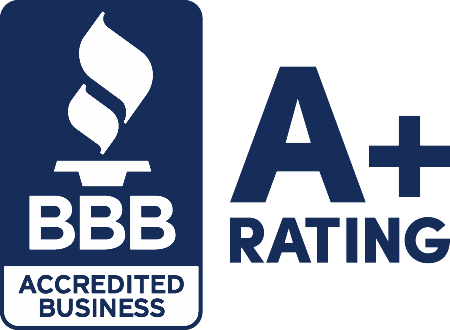What does Market Size mean for Business?

Market size refers to the total potential customers or how much revenue a specific market can generate for a business. This essential metric is crucial for businesses to understand the scope of their potential customer base and demand for products or services. Companies can gauge the scale of opportunity and potential value in a specific industry by calculating market size.
Market Size vs Market Share
Market size refers to the total potential revenue or sales volume that a specific market can generate. It represents the overall demand for a product or service within a particular industry or geographic area.
On the other hand, market share is the percentage of total sales or revenue that a company captures within that market. It indicates how well a business performs compared to its competitors and gives insight into its position within the industry. Understanding market size and market share is crucial for businesses to make informed decisions about their growth strategies and competitive positioning.
Why is knowing the Market Size of a Business important?

Understanding market size is crucial for businesses as it helps assess revenue potential and growth opportunities. By knowing the market size, companies can identify the total addressable market and estimate their potential earnings. This information is vital for making informed decisions about entering new markets or launching new products.
Moreover, knowledge of a particular market size guides setting realistic business goals and targets. Businesses can use this data to establish achievable objectives based on the market’s size and demand. Setting realistic goals ensures that resources are allocated efficiently and efforts are focused on areas with the most significant growth potential.
How do I calculate the Market Size for my Business?

Here are the steps for estimating market size.
Market Size Terms
Before diving into calculating market size, it’s vital to know some essential market sizing terms.
TAM: Total Addressable Market (TAM) is the total revenue opportunity for a specific product or service within a defined market. It represents the maximum potential size of the market that a business can target.
SAM: Serviceable addressable market (SAM) refers to the portion of the total addressable market that a company or business can realistically target and serve with its products or services. This subset considers factors such as geographical limitations, regulatory constraints, and the specific needs or characteristics of the target customers that the company can effectively reach and engage with.
SOM: Serviceable Obtainable Market (SOM) refers to the portion of the total market demand that a company can realistically capture based on factors such as its resources, capabilities, and competitive landscape. It represents the specific segment of the market that a business can effectively target and serve with its products or services, including customers unhappy with existing market offerings.
Target Market: A target market is a specific group of consumers a company aims to reach with its products or services. This group is identified based on factors such as demographics, psychographics, behavior, and needs.
Penetration Rate: The percentage of the total market or target audience that a product or service has captured. It measures how successful a company is at reaching and converting customers in a specific market. A higher penetration rate indicates a larger market share and more widespread product or service adoption.
Market Segmentation: The process of dividing a market into distinct consumer groups with similar needs, preferences, or behaviors. This allows companies to customize their products, services, and marketing strategies to better meet the specific needs of each segment.
Value Proposition: A statement that summarizes why a consumer should buy a product or service. It outlines the offering’s benefits and unique selling points and highlights the value it provides to the customer.
Step 1 – Define the Scope
Start by clearly defining the market you want to analyze. Determine the specific product or service, geographic region, and target customers that make up the market you are interested in.
Step 2 – Gather Relevant Data
Collect historical data from various sources such as industry reports, government publications, trade associations, and market research firms. Look for information on total sales, number of customers, average price per unit, and any other relevant data points.
Step 3 – Calculate Total Market Sales
Multiply the total number of units sold by the average price per unit to determine the total market sales. This will give you an estimate of the overall revenue generated by the market.
Step 4 – Determine Market Share
Research the market share of key competitors in the industry. Divide their sales revenue by the total market sales to calculate their percentage of market share. This will help you understand the competitive landscape.
Step 5 – Adjust for Potential Growth
Consider factors such as economic trends, technological advancements, and changes in consumer behavior that could impact the market size in the future. Adjust your calculations based on these potential growth factors.
Step 6 – Validate Your Findings
Cross-reference your calculations with data from multiple sources to ensure accuracy. Consider consulting with industry experts or conducting surveys to validate your market size estimates.
Step 7 – Present Your Findings
Once you have calculated the market size, present your findings in a clear and concise manner. Use charts, graphs, and tables to visualize the data and make it easier for others to understand your analysis.
What are the benefits of Calculating Market Size?
Calculating market volume offers several advantages for businesses. It provides crucial insights for strategic planning and market positioning. Companies can make informed decisions on resource allocation and growth strategies by determining the total addressable market.
Understanding customer needs and preferences is another key benefit. Market size calculations help identify target demographics, enabling businesses to tailor their products or services accordingly. This leads to improved customer satisfaction and loyalty.
Moreover, calculated market size data makes assessing market potential and forecasting trends more accurate. Companies can anticipate demand fluctuations, plan inventory levels effectively, and stay ahead of competitors by adapting to changing market conditions promptly.
What are the drawbacks of Calculating Market Size?
Calculating market size comes with its own challenges that can impact the accuracy of estimations. The possibility of inaccurate data is a significant drawback, as it can lead to flawed calculations and misinterpretations. For instance, relying on outdated or incomplete information may skew the final market size figures.
Moreover, overlooking dynamic market changes is another common pitfall. Failing to account for shifts in consumer preferences, technological advancements, or economic factors can result in misleading market size assessments. This oversight can hinder strategic decision-making and planning for businesses.
Dependence on assumptions poses a risk to the reliability of calculated market sizes. Critical assumptions about factors like customer behavior, competition, or industry trends can introduce bias and inaccuracies into the final analysis. These assumptions may not always align with the actual market conditions, leading to distorted estimations.
Calculating Market Size Pros & Cons

Pros:
- Helps businesses understand the potential demand for their products or services.
- Provides insight into market trends and opportunities for growth.
- Can aid in making informed decisions about pricing, distribution, and marketing strategies.
Cons:
- Market size calculations may be based on assumptions and estimations, leading to inaccuracies.
- Different methodologies can result in varying market size estimates, causing confusion.
- External factors can impact the accuracy of a market size calculation.
How can my Business leverage Market Size?

Businesses can leverage the estimated market size to improve their marketing efforts and boost sales in several ways.
Targeted Advertising: By understanding the market size, businesses can tailor their advertising strategies to reach a larger audience. This can include targeting specific demographics or geographic locations where the market is most significant.
Product Development: Knowing the market size can help businesses identify opportunities for new product development or improvements to existing products. By catering to the needs and preferences of a larger market, businesses can increase sales and market share.
Competitive Analysis: Understanding the size of the market allows businesses to conduct competitive analysis more effectively. By knowing their competitors’ market share size, companies can identify areas where they can gain a competitive advantage and increase their own market share.
pricing strategies: Market size can also influence pricing strategies. Businesses can adjust their prices based on the market size, competition, and consumer demand to maximize profits and sales volume.
expansion Opportunities: Businesses can use market size data to identify opportunities for expansion into new markets or regions. By understanding the potential size of these markets, businesses can make informed decisions about where to focus their resources for growth.
Frequently Asked Questions

Here are the most common questions about how to calculate market size.
What’s the difference between Market Size and Market Value?
Market size refers to the number of potential customers, providing insights into the demand for a product or service. It helps businesses understand the scale of their target market size.
On the other hand, market value represents the monetary worth of a product, service, or an entire market. It focuses on determining the financial aspect of a business’s offerings.
Understanding both metrics is crucial for businesses. Market size aids in estimating demand and identifying growth opportunities. Meanwhile, market value plays a vital role in determining a business’s financial health and valuation.
What are some strategies to define my Business’s Target Market?
Conducting market segmentation is crucial for identifying specific customer groups based on shared characteristics or behaviors. Businesses can tailor their marketing strategies more effectively by dividing the market into segments.
Analyzing consumer behavior and preferences helps in targeted marketing by understanding what influences customers’ purchasing decisions. This data allows businesses to create personalized campaigns that resonate with their target audience.
Utilizing demographic and psychographic data provides precise targeting by focusing on factors like age, gender, income, lifestyle choices, and values. This information helps businesses tailor their products or services to meet the unique needs of different customer segments.
What is Top Down Market Sizing vs Bottom Up Market Sizing?
Top-down market sizing and bottom-up market sizing are two distinct approaches to calculating a market’s size. Top-down sizing starts with the overall market data and gradually narrows down to specific segments or niches within the market. On the other hand, bottom-up sizing begins with a detailed analysis of individual segments or customer groups and then aggregates these findings to estimate the total market size.
Both top-down and bottom-up approaches offer unique insights into market dynamics and consumer behavior. Top-down sizing provides a broad overview of the market landscape, allowing businesses to understand the macro-level trends and opportunities. In contrast, bottom-up sizing offers a more granular perspective by delving into specific customer segments, preferences, and purchasing behaviors.
How does Calculating Market Size impact overall Marketing Strategies?
Calculating market size shapes marketing campaigns by identifying target segments for better outreach. It also helps guide budget allocation to ensure maximum return on investment. By understanding market size, companies can optimize resource utilization and focus on profitable opportunities.
Market size calculations provide crucial insights that enhance decision-making within organizations. These insights help align marketing strategies with identified market opportunities. Understanding the market size allows businesses to tailor their campaigns to effectively meet the needs of prospective customers.
How to Calculate Market Size – Final Thoughts

Knowing your market size can effectively guide your marketing strategies and help you precisely define your target market. By distinguishing between market size and market value, you can tailor your approaches accordingly.
Whether you opt for top-down or bottom-up market sizing, the impact on your overall marketing strategies is profound. Now armed with these insights, take action to refine your business strategies and stay ahead in a competitive landscape.
Contact us if you have more questions about market size or to apply for a small business loan. Our alternative financing experts can help you find the best funding options to reach your target market or other business goals.













